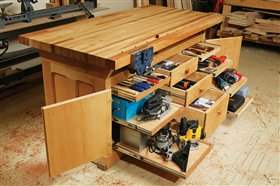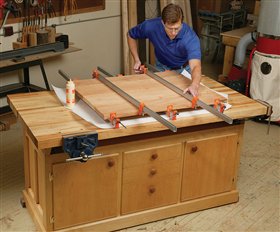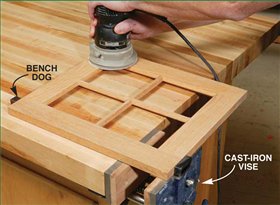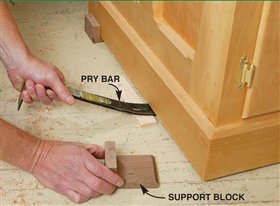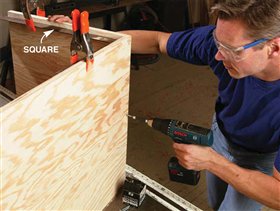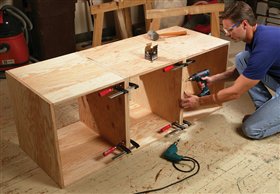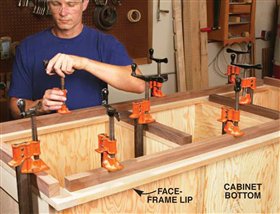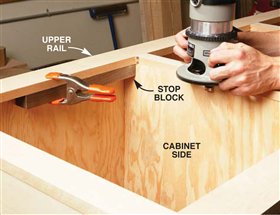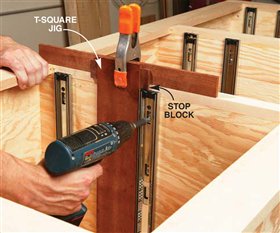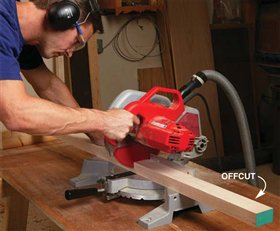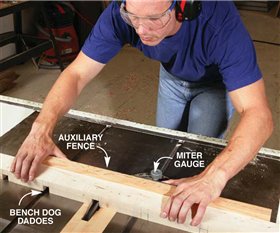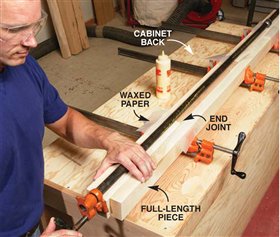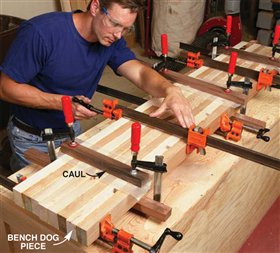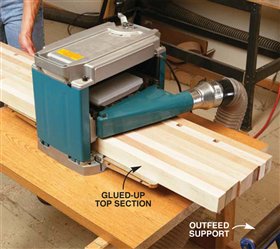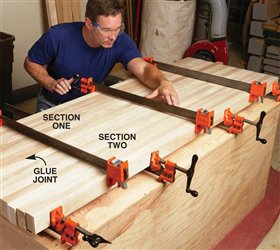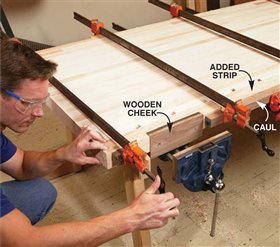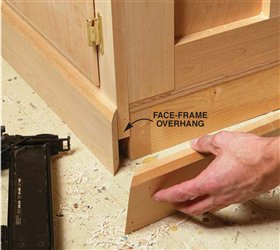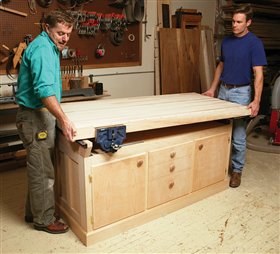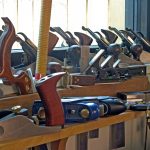We may receive a commission when you use our affiliate links. However, this does not impact our recommendations.

Dream Workbench
A modern bench that features storage, stability and mobility
By Dave Munkittrick
|
Tired of working on a sheet of plywood thrown over a pair of
sawhorses? Had it with rolling benches that wiggle and wobble? Hate
running around your shop whenever you need a tool? Boy, do we have the
bench for you.
Our dream bench starts with traditional workbench features like a
thick top, a sturdy base, bench dogs and a pair of vises. Then we added
tons of storage, an extra-wide top, and modern, cast-iron vises. Last
but not least, we devised a simple method to make the bench mobile and
still provide a rock-solid work platform.
|
|

You may also like…
Wedge-Base Workbench
Master Cabinetmaker's Bench
Adjustable Workbench
|
Our bench is built to withstand generations of heavy use. Simple,
stout construction absorbs vibration and can handle any woodworking
procedure from chopping deep pocket mortises to routing an edge on a
round tabletop.
The thick, butcher-block-style top is truly a joy to work on. We'll
show you how to surface this huge top without going insane trying to
level 24 separate strips of glued-up hardwood. Our top doesn't waste
wood—even the offcuts are used.
|
Tons of easy-access storage:
Full extension
drawers and shelves keep your equipment organized and right at hand.
There's room for hand tools, power tools and all of their accessories.
Plus no bending down and fishing through dark cabinet interiors for the
tool you need.
|
|

|
|
Extra-wide, heavy-duty top:
This solid maple top can take a
real beating. Plus it's wide enough to double as an assembly table. If
you only have room for one bench in your shop, this is it.
|
|

|
|
You name it, this bench can clamp it down:
A
traditional bench dog system secures your work for machining and
sanding. The modern cast-iron vises are strong yet easier to install
than traditional vises. The generous overhanging top allows you to
clamp anything from round tabletops to benchtop machines anywhere along
the edge.
|
|

|
|
It's rock-solid but mobile:
Under the base cabinet are six
heavy-duty casters that make the bench easy to move. When you're ready
to use it, lift the edge of the bench with a pry bar and slip four
5/8-in.-thick, L-shaped support blocks underneath. This gives you a
rock-solid feel and unlike locking casters, there's no wobble or
slippage.
|
|

|
|
Start the base cabinet by assembling three identical boxes
with butt joints and screws. Make sure all the parts are square and the
joints are flush. Use a flat area, like the top of your tablesaw, to
help keep things in line.
|
|

|
|
Screw the three boxes together to create the cabinet base. Use clamps to hold the boxes flush and even.
|
|

|
|
Glue and clamp face frames to the cabinet. Start with the
side frames. Then add the front face frame so it overhangs the bottom
of the cabinet to form a lip for the 2×4 base you'll build later.
|
|

|
|
Trim the face frame flush to the cabinet sides. Use a stop
block at the top of the cabinet openings to prevent the router from
cutting into the upper rail.
|
|

|
|
Attach the drawer slides to the cabinet. A simple T-square
jig positions the slide for quick installation. Stop blocks hold the
slides 1/2 in. back from the front edge for the half-overlay doors. The
doubled-up box sides automatically flush up with the 1-1/2-in.-wide
face frame so there's no need to add blocks for the drawer slides.
|
|

|
|
Cut pieces for the benchtop, making them 2-in. longer than
the finished top. Don't toss the offcuts into the firewood pile. We'll
build them into the top so nothing goes to waste.
|
|

|
|
Cut dadoes for the bench dog holes in one of your benchtop
pieces. Use a dado blade and a miter gauge with a long auxiliary fence
to support the stock. The slots are marked on the top of the piece.
It's okay to eyeball each cut. Exact spacing of the holes is not
critical.
|
|

|
|
Glue together the offcuts end to end. Clamp them between two
full-length pieces to keep them straight. This yields a few more strips
for the top and uses up your offcuts. Waxed paper around the joint
keeps the segmented strip from sticking to the full-length pieces. We
used the back of the cabinet for a flat glue-up table.
|
|

|
|
Glue eight strips together to form one 12-in. section of
the top. Cauls keep the top pieces in alignment. The bench dog piece is
placed second from the edge with the dadoes facing toward the front
edge.
|
|

|
|
Plane each 12-in. section flat. Take light cuts and make
sure your planer knives are sharp, to minimize tear-out. Outfeed
support is essential when planing heavy stock like this.
|
|

|
|
Clamp the 12-in. sections together one at a time. You only
have one joint to worry about so make it flush. Extra effort here will
pay off in the end. You'll only have to lightly sand for a flat, smooth
top.
|
|

|
|
Mount the face vise, then glue two strips on either side. This will make the front edge of the top flush with the wooden cheek of the vise.
|
|

|
|
Screw the cabinet onto the base and nail on the base
molding. If your bench is going to be mobile, use glue as well as nails
to prevent the molding from being inadvertently pried off when the
bench is lifted.
|
|

|
|
Place the benchtop on the cabinet. This top is heavy, so get
a friend to help with the lifting. Check for an even overhang on all
four edges. Then secure with lag bolts.
|
|

|
Product Recommendations
Here are some supplies and tools we find essential in our everyday work around the shop. We may receive a commission from sales referred by our links; however, we have carefully selected these products for their usefulness and quality.





